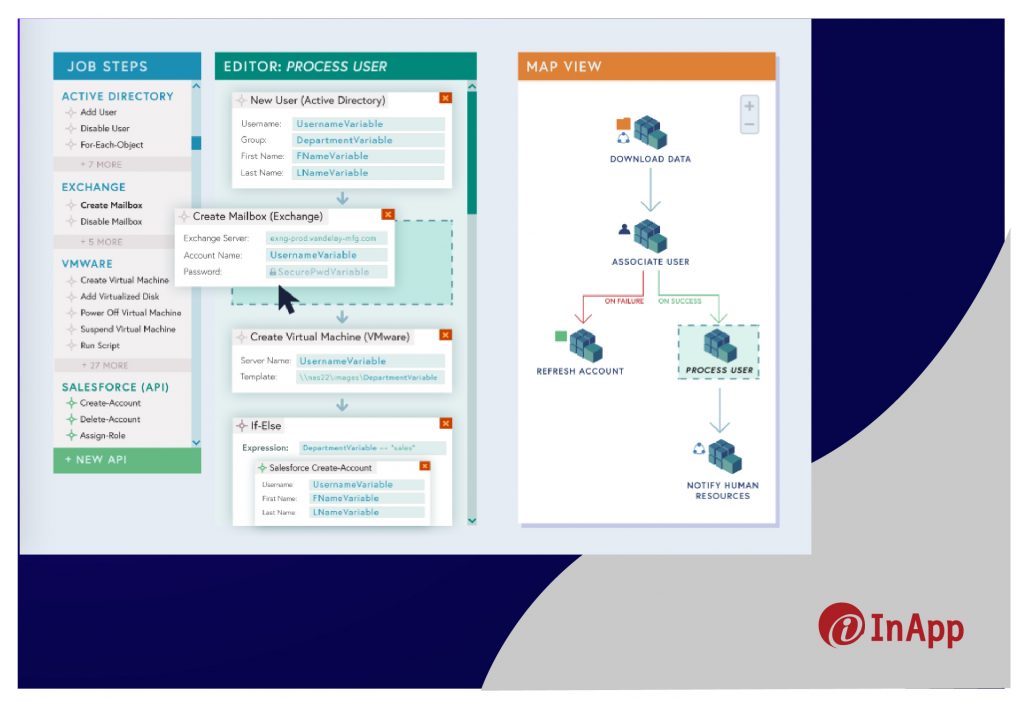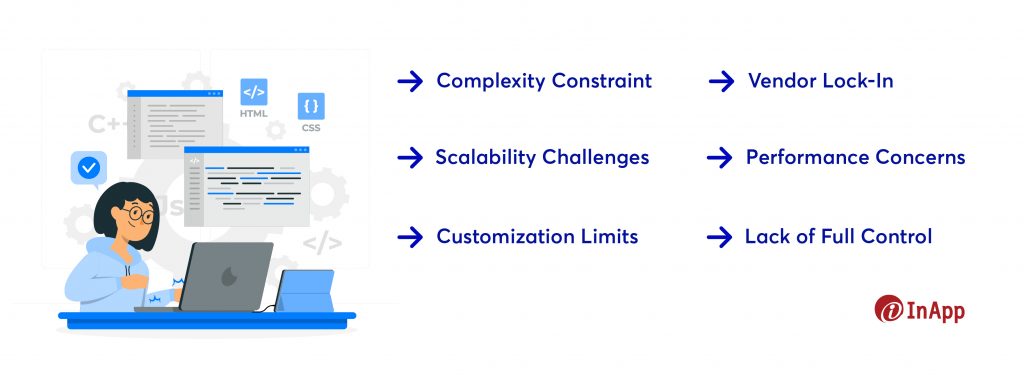With the demand for digital transformation at an all-time high, businesses are on the lookout for means to accelerate their software development lifecycle. Amidst this backdrop, low-code development has emerged as a revolutionary technology in the software development landscape.
Unlike traditional software development processes, Low-Code uses an intuitive model-driven interface, enabling users to construct applications seamlessly with drag-and-drop functionality.
Today the popularity of low-code is on the rise and is driving us toward a future where even those less acquainted with technology can craft their own software applications.
Join us on an enthralling journey as we navigate the landscape of low-code software development!
What is Low-Code Development?
For the sake of understanding low-code development better, let’s consider an example.
Imagine you plan on building a treehouse but you know nothing about carpentry. Though you have a clear idea of how the treehouse should look, you can’t build one from scratch because you are not a carpenter.
And finally, you decide to build one by assembling the pre-made parts that are available in the market.

Low-code development is similar to this.
Just like how you didn’t have to build the treehouse from scratch, with low-code development you can build a software product by fitting together ready-to-use building blocks.
The interesting part? You don’t need deep technical skills!
In short, low-code development is a way to create software applications by connecting ready-made components using a visual interface (drag & drop) without needing to know all the nitty-gritty details of coding.
How Does Low-Code Software Development Work?
Low-code development is visual-based!
Rather than a technical coding environment, low-code operates in a model-driven, drag-and-drop interface. It enables developers to build applications with minimal manual coding, relying more on visual interfaces and pre-built components.

In low-code development, developers use a visual interface to design the application’s user interface, define workflows, and connect various data sources.
Benefits of a low-code development to business owners
Low-code application development has been gaining traction in the software development landscape due to its ability to rapidly build and deploy software applications — without the need for coding. Furthermore, it also offers a way to bridge the gap between IT and business teams by allowing non-technical stakeholders to contribute to the application design and development process.
Here are some of the main benefits of low-code development to business owners.

- Accelerated Development
Low-code platforms come with pre-built components, automated code generation, and reusable elements ensuring quicker time-to-market for your products and solutions. Apart from this, low-code environments can manage complex workflows through visual tools, enabling quicker iteration and fostering collaboration among stakeholders.
- Cost Efficient
By streamlining the software creation process and reducing manual coding efforts low-code development reduces development costs. Apart from this, its visual interface and pre-built components, allow developers to create applications more swiftly, which translates to lower development costs.
- Business-IT Collaboration
Before low code, software development required a team with expertise in programming languages. But now the tables have turned with the emergence of low-code which enables easier collaboration between business stakeholders and IT teams. This has paved the way for business owners to actively participate in the design process, ensuring the final application aligns closely with their business requirements.
- Resource Optimization
With low code, organizations can automate certain software development processes and use reusable components in the process. This in turn frees up resources that can be then used for more complex and strategic projects, enhancing overall productivity.
- Reduced Skill Barriers
Business owners and subject-matter experts can contribute to the development process without needing in-depth coding knowledge. This democratization of application creation foster cross-functional collaboration overcoming skill barriers.
- Rapid Prototyping
Considering the accelerated development cycle, low-code platforms can provide quick prototyping and iterative development. This can prove to be beneficial as it allows businesses to test concepts and gather feedback from stakeholders without completing the entire development.
- Easier Maintenance
Applications built using low code often have standardized components and clear visual representations. This simplifies ongoing maintenance and updates, reducing the burden on IT teams.
What Are The Limitations of Low-Code Development?
Though low-code development simplifies and speeds up software development, they do pose challenges. Here are some of the limitations of low-code development.

- Complexity Constraint
Low-code platforms simplify development but they struggle with highly complex or customized applications that demand intricate coding logic. For a better understanding, let us see the following example.
Consider developing a complex application for a manufacturing company to optimize its supply chain. This application has to integrate with the existing ERP systems, perform real-time analytics on production data, and provide customized reports for different departments.
While low-code platforms can handle certain aspects of the application, such as creating user interfaces and basic workflows, they might struggle to integrate with the company’s complex ERP systems due to their unique data structures and APIs. The intricate data transformations and business logic required for real-time analytics might exceed the capabilities of the platform’s visual interface, necessitating custom coding.
- Scalability Challenges
Scalability is a major concern in low-code development. Low-code platforms may have predefined architectural constraints that could hinder scaling. Their abstraction layers and pre-built components might not always align with the intricacies of high-demand scenarios. Additionally, as application complexity grows, the platform’s performance could degrade due to limitations in optimizing resource utilization.
- Customization Limits
As mentioned previously, low-code development uses pre-built & reusable components to speed up development. While this reduces the time to market, it limits the extent of customization possible. The pre-built components and visual interfaces can sometimes restrict the level of customization achievable in applications. This can be particularly relevant in industries where tailored solutions are often essential.
- Vendor Lock-In
In low-code software development vendor lock-in refers to a scenario where a business becomes heavily reliant on a specific low-code platform or provider for building and maintaining their applications. This dependency can potentially limit the business’s ability to easily switch to a different platform or vendor in the future.
If the need arises to transition to a different platform due to changing requirements, technology advancements, or strategic shifts, the process can be challenging and costly. It might involve rewriting code, reconfiguring workflows, and retraining teams.
- Performance Concerns
While low-code development offers various advantages, it’s important to be aware of its impact on performance. The visual nature of low-code tools, while simplifying development, can introduce an abstraction layer between the application and the underlying code.
This layer might lead to a slight performance overhead, particularly in scenarios where applications demand real-time processing, high data throughput, or complex calculations. In industries where swift and efficient operations are critical, such as manufacturing and healthcare, these performance considerations become crucial.
- Lack of Full Control
Unlike traditional software development, there are limitations to the extent to which developers can influence and fine-tune the intricate details of an application’s functionality and behavior. The abstraction layer in low-code development platforms often limits the degree of control that developers have over certain aspects of the application.
Future of Low Code Development
The low-code software development market is expected to generate revenue of $187.0 billion by 2030 (source). Developments happening in the domain of low-code development hold promising advancements that can significantly shape the software development landscape. As organizations increasingly seek rapid, cost-effective solutions, low-code’s evolution aligns seamlessly with these needs.
The rise of AI and ML within low-code platforms could automate routine tasks and empower applications with intelligent insights, offering added value. Furthermore, the democratization of development could see non-technical stakeholders contributing more actively, bridging the gap between business and IT teams. If you have any questions regarding low-code development, get in touch with us!
